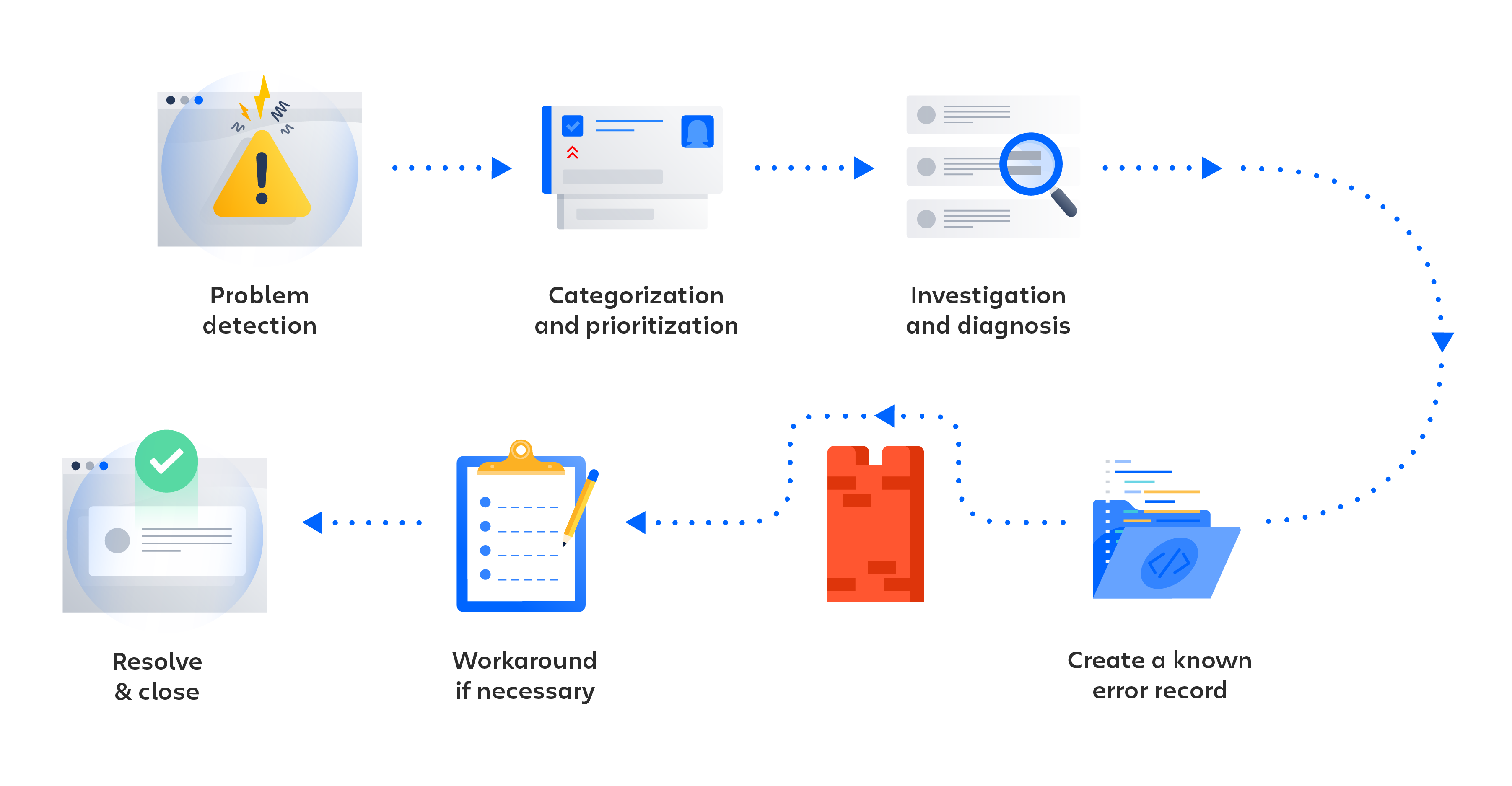
A strong problem management process helps teams identify and manage the root causes of incidents on an IT service. Done well, a consistent problem management process can keep repeat incidents from happening and stop critical incidents from happening in the first place. It is a core component of ITSM frameworks.
Problem management works alongside incident management and other ITIL practices to form an overall ITSM strategy.
At Atlassian, we advocate bringing the problem and incident management processes closer together.
When problem management is a heavy, siloed, and separate process, companies can end up creating a dumping ground of problems. This backlog is where problem issues go to die in some teams. It’s best to get problems in front of the teams that can handle and do valuable investigations.
Jira Service Management enables teams to work with more transparency and context by equipping them with a repertoire of collaborative tools. As we mentioned, it’s best when incident management and problem management go hand in hand. Let’s walk through the problem management process to understand how this works best.

ITIL V3 is the most recent edition of the popular ITIL framework that includes Problem Management as a recommended process. The newest ITIL edition, V4, shifts the recommendations to suggested practices instead of processes. The new suggestions aim to empower organizations to define their own processes specific to their unique circumstances and needs.
Overall, however, an effective problem management process delivers valuable service improvements, while identifying and eliminating the driving forces behind incidents.
Learn more about how Jira Service Management can transform your problem management process.